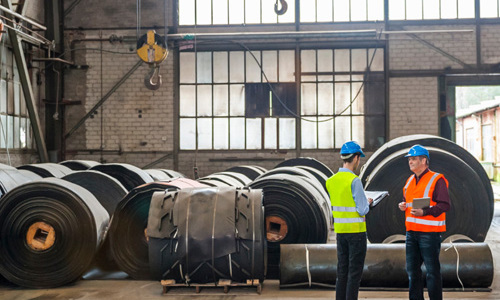Different industries increasingly use synthetic rubbers as raw material. Styrene-Butadiene, also called SBR (short for Styrene-Butadiene Rubber), is an elastomer that does not contain metals and is not thermoplastic. It is obtained by polymerizing a mixture of styrene and butadiene. It is the synthetic rubber with the highest production volume worldwide. It reaches more than 65% of the total production of synthetic rubbers in the world. Likewise, SBS (styrene-butadiene-styrene) is a hard rubber, with thermoplastic characteristics, which almost completely replaces natural rubber. Reasons for the increase in the use of SBS and SBR in the footwear industry. Both SBS and SBR offer multiple advantages for the industry, when compared to the use of traditional rubber. These advantages can be divided into those that benefit the customer and those that favor the manufacturer. Benefits for those who use this footwear: Achieve more comfortable footwear. Greater durability. Lighter footwear. Advantages for the manufacturer: It speeds up industrial processes, since the combination of polymer chains is simplified. The mechanical properties of the materials improve considerably and thus the industrialization processes are optimized. Greater adherence is obtained in the joints, these being more resistant and offering greater durability of the footwear. It allows the recycling of raw material. It offers the short cycle injection process, which increases productivity. The new rubbers and adhesives used in the production of footwear have been industrially validated through the manufacture of men's and women's sports shoes and footwear in different companies in the sector. Different industrial tests demonstrated that the new materials proposed to manufacture footwear are effective. In addition, they avoid complex processes such as sanding and halogenation, which makes it possible to optimize production times and costs. Styrene butadiene rubber or SBR. SBR has mechanical, physical and chemical properties. Mechanical It resists abrasion very well. It is not very good at withstanding tearing. Ability to resist impacts. Resist bending in moderation. Physical Suitable to resist temperatures from -10° C to 70° C. It supports the aging process well. Not ideal for withstanding weather effects. Great electrical resistance. Reduced gas permeability. Chemical It resists water very well, but the same does not happen with water vapor. It accepts contact with hydrocarbons, regardless of whether they are aliphatic, chlorinated or aromatic. It presents low resistance to diluted acids, which in turn decreases this resistance even more when the concentration of these acids is higher. It is practically unaffected by the presence of oils, regardless of whether they are of animal or vegetable origin. SBR uses It is used as raw material in the manufacture of the following products: Small and medium size tire covers. Soles for footwear of different categories. They also call it vulcanized rubber and it can be of different kinds. Compact, also called Neolite, expanded (Porolite), lacquered, synthetic crepe or velvety. Any of them offer good abrasion resistance. However, it does not withstand thermal aging or chemicals well. If we expose an SBR soleplate to a flame, even if we remove the flame, the soleplate continues to burn. The flame is yellow in color and gives off soot, as well as an odor similar to burning rubber. Belts for conveyor belts. Transmission belts. Hoses of different thicknesses for engines and machinery of all kinds. Sealing joints. Brake and clutch pedals. Sanitary products for different uses. Gloves. Various profiles. SBS or styrene-butadiene-styrene SBS is obtained from the polymerization of the mixture of styrene and butadiene. The first of its components is a maximum hardness plastic that gives it its resistance and makes it very durable. While the second is a rubber-like material, and gives it the properties that make it appear similar to rubber. It has greater hardness, which is why it is usually called "block polymer". It is used in the manufacture of elements whose durability is essential. SBS Properties SBS has the mechanical properties of rubber, which in turn also combines them with the processability of thermoplastics. Most of the different types of rubber are difficult to process, since their weave is interlocked. Styrene-butadiene-styrene rubber, like other thermoplastic elastomers, are similar to rubber, but have the unique feature of not being crosslinked. Thus, it allows us to achieve useful shapes without going through complicated processing. Its melting point is 160° to 200° C or its equivalent of 320° to 400° F Its most outstanding properties are: Excellent behavior with minimum temperatures. Good tensile strength. Very good surface friction coefficient. Virtually no permanent deformation. Because it has no screen, it allows easy processing. It has good electrical properties. Different uses of the SBS SBS stands out because it is versatile and adapts to a wide variety of uses. It works well as a sealant and also as an adhesive for the hot melt process. It is also used in: Manufacture of footwear. Because it is a thermoplastic elastomer, it is ideal for the injection of parts such as the soles of slippers and other kinds of footwear. Curing times are considerably less than those needed for elastomers that require vulcanization. Pavement: its resistance to climatic factors makes it the ideal product for paving. With SBS, the pavement has greater flexibility, better resists the aging of the material, UV rays and wear caused by water. Manufacture of waterproof membranes to be placed on building roofs and rooftops. Adhesives: preparation of the adhesive for some special adhesive tapes to be used in packaging. It can be used alone or in combination with styrene-isoprene-styrene (SIS). It should be noted that the SBS, in turn, can be subjected to other processes that modify it. Thus, without losing the thermoplastic properties, it can be applied to other uses for which normal SBS is not suitable. https://chemfluid.com.co/en/sbr-sbs-rubbers-for-the-new-application-in-footwear/
